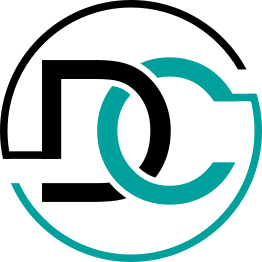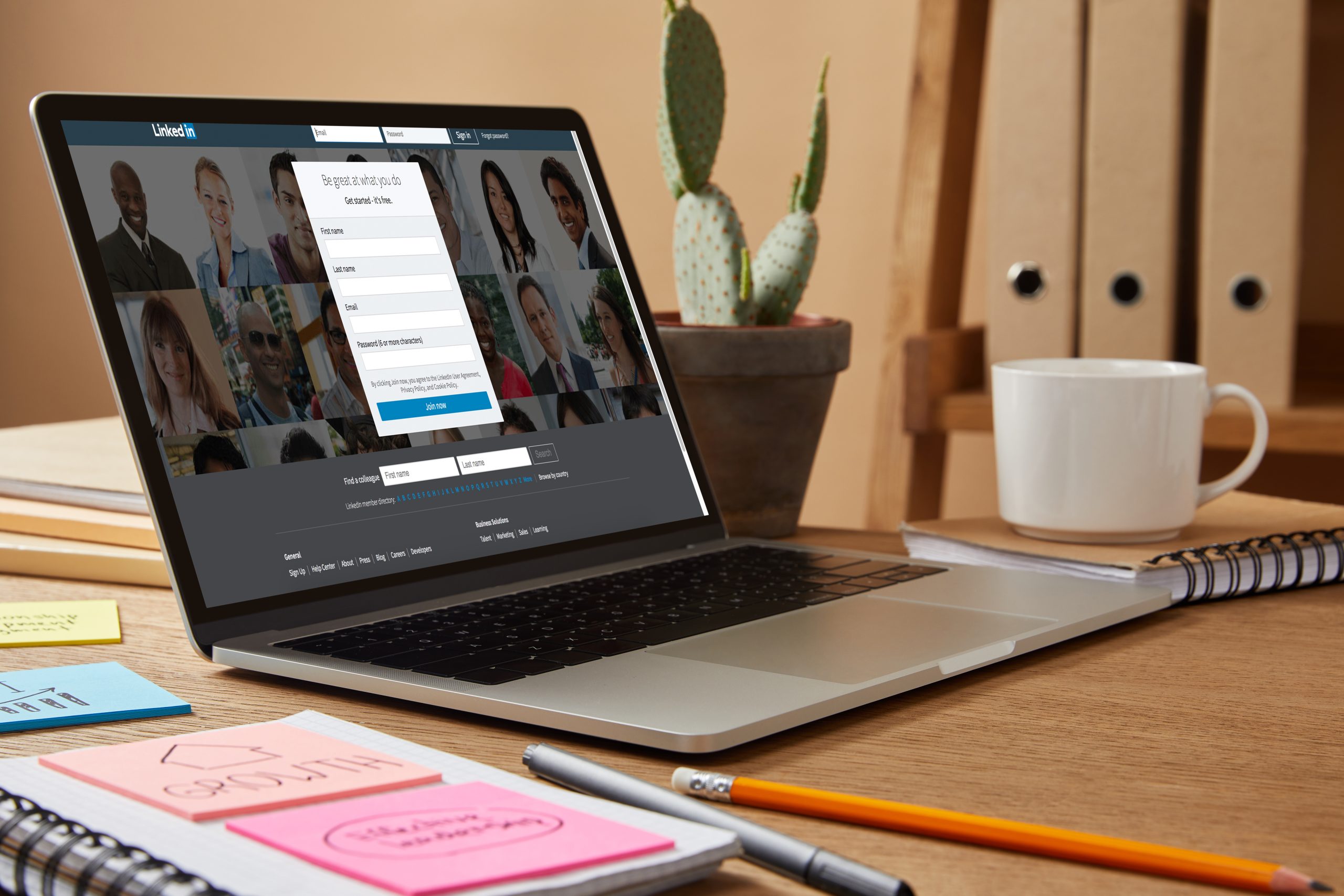Elevating Your Executive Presence on LinkedIn in 2024
In the ever-evolving landscape of the professional world, LinkedIn has cemented its status as a pivotal platform for executive networking, personal branding, and career advancement. As we step into 2024, the significance of a well-optimised LinkedIn profile for executives cannot be overstated. This is your digital handshake, the first impression you make on potential employers, collaborators, and industry peers.
I’m here to guide you through the nuances of crafting a LinkedIn profile that resonates with the executive ethos of today’s job market. Whether you’re seeking to climb the corporate ladder, transition into new industries, or simply enhance your professional network, your LinkedIn profile is a crucial tool in that journey. From selecting the right profile photo that reflects your professional demeanour to crafting a headline that encapsulates your leadership prowess, every element of your profile needs careful consideration and strategic alignment with your career objectives.
In this guide, we will delve into the key components of an effective LinkedIn profile for executives. We’ll explore how to present your experiences, showcase your skills, and articulate your unique value in a way that captivates and engages the right audience. With these insights, your LinkedIn profile will not just be a reflection of who you are as a professional, but also a powerful beacon, attracting the right opportunities and connections in 2024’s competitive executive landscape. Let’s embark on this journey to elevate your executive presence on LinkedIn.

Key Components of an Executive LinkedIn Profile
In 2024, an executive’s LinkedIn profile is more than just a digital resume; it’s a personal branding powerhouse. To leverage its full potential, understanding and optimising each component is essential. Here’s a breakdown of the key elements and how to make them work for you:
1. Profile Photo
- Professionalism is Key: Choose a recent, professionally-taken photo with a neutral background. Your attire should reflect the culture of your industry.
- Engaging Appearance: Ensure your facial expression is approachable yet professional. A smile can go a long way in making a positive first impression.
2. Headline
- More Than a Job Title: Your headline should do more than just state your current position. It should encapsulate your value as a leader and your core expertise.
- Balancing Act: Combine professional credentials with a touch of personal branding. This could be a mix of your role, key skills, and a unique value proposition.
3. Banner
- Visual Storytelling: Select a banner image that complements your professional brand. This could be an industry-related image, a company logo, or something that reflects your professional ethos.
- Consistency Matters: Ensure your banner aligns with your overall profile theme and adds to your professional narrative.
4. Summary
- Personal Yet Professional: Write in the first person to create a more personal connection. Your summary should highlight your signature strengths and notable achievements.
- Storytelling Approach: Share your professional journey, the challenges you’ve overcome, and the values that drive you. This is your chance to tell your story beyond the resume.
5. Experience & Education
- Highlight Key Roles: Focus on recent and relevant positions, detailing your contributions and achievements in each role.
- Educational Background: Include your academic qualifications, especially those that are pertinent to your current professional standing.
6. Skills, Endorsements, and Recommendations
- Strategically Select Skills: Choose skills that are most relevant to your executive role and industry.
- Endorsements: Encourage colleagues to endorse your skills, which adds credibility to your profile.
- Soliciting Recommendations: Personal testimonials from colleagues, clients, or superiors can significantly enhance your profile’s authenticity.
Each of these components plays a vital role in shaping how you are perceived professionally on LinkedIn. By carefully crafting each section, you ensure that your profile is not just a summary of your career, but a compelling, comprehensive portrayal of your executive identity in 2024.

Writing an Effective LinkedIn Headline
The headline on your LinkedIn profile is much more than a job title; it’s a powerful statement of your professional identity and value proposition. As an executive in 2024, crafting an effective LinkedIn headline is crucial for making a strong first impression. Here’s how to create a headline that stands out:
1. Clearly Define Your Role and Value
- Be Specific: State your current position or primary professional focus. If you’re a CEO, CFO, or another executive, make this clear.
- Showcase Your Expertise: Highlight your area of expertise or industry. For example, “Experienced CFO in Tech Startups” gives a clear indication of your niche.
2. Demonstrate Your Value as a Leader
- Leadership Qualities: Use terms that convey your leadership style or philosophy, such as “Visionary Leader” or “Strategic Thinker”.
- Impact-Focused: Include a brief statement about the impact you make, like “Driving Sustainable Growth” or “Transforming Business through Innovation”.
3. Include Keywords for SEO
- Optimise for Search: Use keywords relevant to your industry and role. This ensures your profile appears in search results when recruiters or potential connections look for professionals in your field.
- Balance Keywords with Readability: While SEO is important, ensure your headline is still engaging and easy to understand.
4. Add a Personal Touch
- Reflect Your Brand: If there’s something unique about your approach or perspective, consider including this. For instance, “Empathetic CEO Committed to Workplace Diversity”.
- Stay Professional: Keep it relevant to your professional life. Personal interests can be included if they enhance your professional image.
5. Examples of Strong Headlines
- For a CEO: “Innovative CEO | Leading Digital Transformation in FinTech | Forbes 30 Under 30”
- For a Marketing Executive: “Chief Marketing Officer | Driving Brand Growth with Data-Driven Strategies | Speaker & Industry Thought Leader”
- For a Technology Leader: “CTO Specialising in AI Solutions | Building Future-Ready Tech Ecosystems | TEDx Speaker”
Your LinkedIn headline is often the first thing someone reads about you. A well-crafted headline can intrigue viewers to explore your profile further, opening doors to new connections and opportunities.

Showcasing Signature Strengths in Your Summary
The Summary section of your LinkedIn profile is your opportunity to engage readers with a compelling narrative about your professional journey and signature strengths. As an executive in 2024, it’s essential to articulate what sets you apart. Here’s how to craft a summary that showcases your unique value:
1. Start with a Strong Opening
- Capture Attention: Begin with an intriguing hook or a powerful statement that reflects your professional ethos. For instance, “Transforming challenges into opportunities has been the cornerstone of my career as a tech executive.”
- Relevance to Your Audience: Consider what your network, recruiters, or potential employers would find most compelling about your journey.
2. Highlight Your Core Strengths
- Key Achievements: Mention significant accomplishments in your career, using quantifiable metrics where possible. For example, “Led a 200% revenue growth over three years as CEO of XYZ Corp.”
- Leadership Style: Talk about your approach to leadership and management, highlighting how it has positively impacted teams and projects.
3. Personalise Your Story
- Career Path: Share insights into how your experiences have shaped your professional outlook. This can include challenges you’ve overcome or pivotal moments in your career.
- Motivations and Values: Discuss what drives you in your career, whether it’s mentoring the next generation of leaders, pioneering innovative solutions, or contributing to societal change.
4. Make It Engaging and Authentic
- First-Person Narrative: Write in the first person to create a more personal and relatable tone.
- Avoid Jargon: Use clear and concise language. While professional, your summary should be accessible and easy to understand.
5. Close with a Call to Action
- Engagement Invitation: Encourage viewers to connect, message, or learn more about your work. For example, “Feel free to connect with me to discuss innovative solutions in renewable energy.”
6. Example of a Strong Summary
- An effective summary might read: “As a Chief Innovation Officer, I’ve steered companies through digital transformation, achieving 40% efficiency improvement in operations. Passionate about sustainable technology, I thrive on building teams that disrupt norms and set industry benchmarks. My journey from software engineer to C-suite executive is fuelled by a commitment to continuous learning and adaptation. Let’s connect to explore synergies and drive technological advancements together.”
Your LinkedIn summary should not just narrate your career history but also illuminate the path you’ve carved as an executive. It’s about painting a picture of your professional landscape, where each word adds depth and clarity to your professional image.

Demonstrating Experiences and Skills
Your LinkedIn profile’s Experience and Skills sections are crucial for detailing your professional journey and showcasing your capabilities. As an executive in 2024, it’s important to present these aspects in a way that not only reflects your career history but also underlines your readiness for future opportunities. Here’s how to effectively showcase your experiences and skills:
1. Detailing Your Professional Experiences
- Chronicle Key Roles: Focus on roles that are most relevant to your current career aspirations. For each position, include a brief description of your responsibilities and any notable achievements.
- Quantify Achievements: Where possible, quantify your successes with metrics or specific outcomes. For example, “Led a team of 50+ and increased department productivity by 30% within one year.”
- Showcase Career Progression: Highlight how each role contributed to your growth and prepared you for executive responsibilities.
2. Skills and Expertise
- Relevant Skills for Executives: Identify and list skills that are essential for your role as an executive, such as leadership, strategic planning, financial acumen, or change management.
- Industry-Specific Skills: Also include skills that are specific to your industry, which demonstrate your in-depth knowledge and expertise in your field.
3. Endorsements and Recommendations
- Cultivate Endorsements: Encourage colleagues, clients, and other professional contacts to endorse your skills. This adds credibility and gives viewers insight into what others value in your professional capabilities.
- Solicit Targeted Recommendations: Personal testimonials can greatly enhance your profile. Reach out to peers, mentors, and former supervisors to provide recommendations that highlight specific aspects of your professional character and achievements.
4. Continuous Learning and Development
- Courses and Certifications: If you have completed any recent courses or obtained new certifications, especially those relevant to your current or desired role, make sure to include these.
- Adaptability and Growth: Showcasing your commitment to ongoing learning and development reflects your adaptability and dedication to staying current in a rapidly evolving business environment.
5. Balancing Breadth and Depth
- Comprehensive yet Concise: While it’s important to provide a comprehensive overview of your skills and experiences, it’s equally important to be concise. Prioritize information that will be most relevant and impactful for your target audience.
By thoughtfully curating your experiences and skills on LinkedIn, you create a narrative that not only highlights where you’ve been but also where you’re capable of going. This section of your profile is your chance to illustrate the depth of your professional journey and the breadth of your capabilities, positioning you as a dynamic and forward-thinking executive.
Advanced Tips for LinkedIn Profile Optimisation

In 2024, having a well-crafted LinkedIn profile is essential for executives, but taking it a step further with advanced optimisation can set you apart. Here are some sophisticated strategies to enhance your profile’s impact and visibility:
1. SEO and Keyword Optimisation
- Use Relevant Keywords: Incorporate industry-specific and role-specific keywords throughout your profile. This includes your headline, summary, and experience sections.
- Research Trending Keywords: Stay updated on the keywords most commonly used by recruiters in your field. Tools like LinkedIn’s job search function can provide insights into the most sought-after skills and titles.
2. Utilising Media and Marketing Collateral
- Add Rich Media: Enhance your profile by adding relevant videos, presentations, and documents that showcase your work or speeches at industry events.
- Showcase Achievements: Use the ‘Featured’ section to highlight key accomplishments, media mentions, or thought leadership articles you’ve authored.
3. Aligning Your Headline with Career Goals
- Future-Focused Headline: Craft your headline to not only reflect your current position but also the direction you aim to take in your career. This can help attract opportunities that align with your career trajectory.
4. Skills Assessment and Endorsements
- Take LinkedIn Skill Assessments: Passing these assessments adds a ‘Verified Skills’ badge to your profile, boosting your credibility.
- Proactively Manage Endorsements: Prioritize the most relevant skills for endorsements and reorder them to highlight your strongest areas.
5. Requesting and Giving Recommendations
- Strategic Recommendations: Request recommendations from colleagues, superiors, and clients who can speak credibly about different aspects of your professional expertise.
- Reciprocate Generously: Offer to give recommendations to others. This not only helps your connections but also keeps your profile active and engaged.
6. Showcasing Continuous Learning
- Highlight Recent Learning: Regularly update your profile with any new courses or certifications, especially those pertinent to your current or desired role.
- Demonstrate Thought Leadership: Share insights or write articles on LinkedIn about emerging trends or lessons learned in your field.
7. Engaging with Your Network
- Active Participation: Regularly post, comment, and share relevant content. This keeps your profile active and increases your visibility within your network.
- Publish Long-Form Content: Share your expertise by writing articles directly on LinkedIn. This can establish your thought leadership and spark meaningful conversations.
8. Turn on Creator Mode
- Maximise Your Reach: If you regularly create content, turning on ‘Creator Mode’ can help increase your visibility and grow your audience on LinkedIn.
By implementing these advanced optimisation strategies, you ensure that your LinkedIn profile is not just a static resume, but a dynamic, engaging, and comprehensive representation of your professional brand. These tactics will help you stand out in a crowded executive marketplace and position you effectively for the opportunities of tomorrow.

Executive CV - £499
Let’s create a powerful document, which articulates your value proposition and demonstates your impact as a leader. Your Executive CV is:
- Targeted or speculative.
- Tailor-made either from scratch or re-written.
- ATS optimised.
Final Thoughts
As we navigate the dynamic professional landscape of 2024, your LinkedIn profile stands as a critical component of your executive presence. It’s not just a digital resume, but a vibrant, living platform that showcases your professional journey, highlights your achievements, and connects you with the broader business community. By following the strategies outlined in this guide, you’re not just updating a profile; you’re cultivating a powerful personal brand.
In conclusion, remember that LinkedIn is a tool that thrives on engagement and relevancy. Keep your profile updated with your latest achievements and insights. Engage with your network through thoughtful content, comments, and participation in discussions. This not only enhances your visibility but also demonstrates your commitment to your industry and your role as a thought leader.
Your LinkedIn profile is a gateway to new opportunities, a platform for sharing your unique executive voice, and a means to influence and inspire others in your field. By optimising each element of your profile, from the photo and headline to the summary and experience sections, you position yourself effectively for the next step in your career journey.
So, take these insights, apply them to your LinkedIn profile, and watch as it transforms into a powerful testament to your executive brand. In the ever-evolving world of professional networking and personal branding, let your LinkedIn profile be the beacon that guides you to new horizons of success and opportunity.
Let's Work Together
I have spent the last 10 years supporting companies ranging from start-ups to Fortune 500 companies to find and the best talent around the world.
During this time, I have:
✔️ Scanned and reviewed more than 26000 CVs.
✔️ Conducted over 7000 interviews.
✔️ Secured new jobs and promotions in 20 countries across 3 continents.
For the past 5 years I have been developing best practices and solutions to support today’s and tomorrow’s leaders.
Are you interested in working with me?
Best of luck,
Dave Crumby
Your Executive Partner
Certified Leadership and Management Consultant | Certified CV Writer





